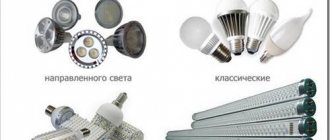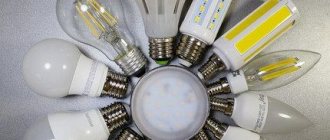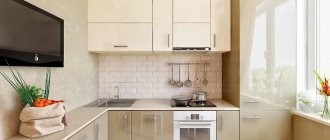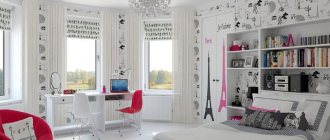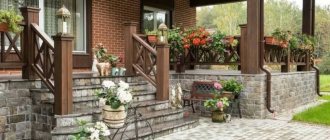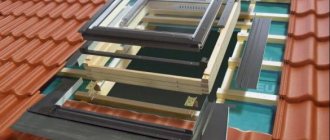The lighting design in an apartment with suspended ceilings changes the effect of all rooms. With the right stretch ceiling lighting concept, you will not only provide the perfect lighting, but also create an ambience no matter the situation. There are a wide variety of lighting systems for suspended ceilings. Before choosing lighting for a suspended ceiling, you should first think about what you want to achieve with the lighting in the room.
Do you want to light a certain area or different areas differently, do you want to light the room harmoniously or do you want no light sources on the ceiling and they are hidden?
Once you answer these questions, it's best to look through our list of different suspended ceiling lights. When choosing the design of luminaires on a suspended ceiling, several lighting systems are available. You have a choice between regular lights and chandeliers, spotlights, surface-mounted lights, LED panels and LED downlights.
Installation Tips
Although recessed lighting fixtures are easy to install, you still need to follow some recommendations when installing them:
- In one room it is necessary to use the same type of ceiling spots, and even better if they are manufactured at the same factory. Even at the stage of purchasing such devices, it is imperative to check the completeness of their configuration, or rather the presence of cooling and reflective elements.
- If the room has suspended ceilings, then the power of the LED lamps used should not exceed 40 W. And if you need to install devices with a power of 12 W, then you will have to purchase a step-down transformer in the kit.
- With a ceiling height of 2.5 m, recessed lamps are installed at least 60 cm from the wall or partition, and the gap between the devices themselves should not be less than one meter.
- The type of electrical cable is selected depending on the number and total power of the spots, the length of the wiring, as well as the material from which the ceiling is made. For example, a simple wire is suitable for drywall, and only fireproof wire for a base made of plastic or MDF panels.
With proper installation, a recessed LED lamp can last over ten years.
Ceiling lighting fixtures have become popular not only due to their efficiency, because LEDs consume much less electricity than incandescent lamps, but also due to their design and the ability to create a unique lighting effect in the room. Also, built-in spots are ideal for installation in suspended or suspended ceilings, which are now installed in almost every home.
https://opotolkax.com/wp-content/uploads/2016/06/Potolochnye-svetilniki-i-spoty-raznovidnosti-i-tehnologija-ustanovki-min.jpg 480 640
admin
https://opotolkax.com/wp-content/uploads/2016/04/image-min.png
2016-06-11 15:46:112019-03-06 19:06:51Recessed ceiling LED spots
How to connect an LED strip to a 220 Repair of a chandelier with a remote control for your…
Classification by type of light bulbs
Recessed ceiling lights have lamps in their design, which, in turn, differ in the degree of brightness, heat release and light temperature. There are:
- Incandescent lamps - despite their fairly low cost, incandescent lamps have a number of disadvantages. These include high levels of electricity consumption and heat generation, which over time lead to deformation of ceiling structures and increased monthly payments for light.
- Halogen lamps - this type of lighting elements can often be found in spotlights. The cost of these lamps is average, but the fact that the halogen elements get very hot introduces several restrictions on the use of lamps.
Firstly, the permitted power should not exceed 40 watts to avoid high temperatures, and secondly, it is not recommended to touch the lamps with bare hands, this can lead to defects due to epithelial particles and fat getting on the surface of the quartz glass.
- Fluorescent lamps - this type uses a chemical reaction of mercury and gas in its work, resulting in a luminescent effect. The advantages of such lamps include a high level of luminous efficiency and a long service life.
- Energy-saving lamps - the main features and advantages of these lamps are energy saving and low cost, but due to the design features they are used mainly for outdoor lighting. Overall dimensions, coupled with a high level of heating, do not allow the widespread use of energy-saving elements.
- Light-emitting diode or LED lamps are the crown of energy saving and productivity; their efficiency is ten times higher than that of other types of lamps.
More about spot lighting
Depending on the design idea, lighting on the ceiling will allow you to distribute light sources throughout the room as much as possible, highlight important areas, and hide individual parts in the room
It is important to understand that using traditional light sources you will not be able to get point light. They use special lamps for the ceiling - they are low-power, otherwise they are called spots
A system based on spotlights can be installed either in suspended or suspended ceilings. This can be a structure in the form of a multi-level ceiling made of plasterboard, MDF, or aluminum panels. These lamps look great in a plastic ceiling.
Key Features
The main feature of any spotlights is the small angle of light dispersion. So, the angle is 30 degrees. Only a small part of the room is illuminated. Considering this fact, the arrangement of lamps should be very dense. Another feature is that the light flux has a conical shape.
Advantages and disadvantages
This type of lighting has both pros and cons, but first let’s highlight the main advantages:
Spot light makes it possible to only partially illuminate a particular room. Many people only need lighting for a few objects. Unnecessary areas should not be illuminated.
Lamps can be placed in any part of the room and thereby obtain the most illuminated room. Often powerful chandeliers are not the best way to illuminate remote corners and places.
Another important advantage is the complete absence of shadows. At any point in the room, flow is created directly overhead, which significantly reduces shadows
At the same time, light is also supplied from other parts of the room.
Cost-effectiveness can also be highlighted. One ceiling light uses less electricity to operate than large chandeliers that illuminate the entire room.
A spotlight scatters light streams at small angles, making it possible to illuminate objects from below. This is very beneficial in terms of design. The quality of light is much higher - it is brighter.
Compared to a traditional chandelier, the service life of spotlights is longer, which allows you to save money on their purchase.
Often, to organize such a solution, it is necessary to supply a current with a voltage of 12 V. This increases safety several times and also saves resources.
With the help of these lamps you can get a multi-colored glow - this allows you to play and try new things. This enhances the beauty of the interior.
These systems are much cheaper in terms of the cost of lighting fixtures. You can’t buy a large and powerful chandelier for this money.
Spot lighting is beautiful, safe and economical
Now about the disadvantages, of course, this is far from ideal despite all the advantages:
There are certain difficulties in the process of designing and organizing lighting. The system consists of a large number of devices, so creating a project will require larger investments than developing general lighting systems.
Some types of lighting fixtures may require a special ceiling design, such as a suspended ceiling, which is not suitable for small rooms with a low ceiling level.
If you plan to install 12 V lamps, then they will need transformers or separate power supplies.
If you have a low ceiling, then it is better to avoid this type of lighting.
Summing up
Properly designed lighting is not only effective, but in some cases an effective design tool. The variety of light sources allows talented owners of apartments and houses to create real works of art or entire pictures of light and shadows.
Unique ceiling lighting
You just need to understand a little about the correct dispersion of the light flux and choose the most suitable lamps for a certain type of room. And then you can not only enjoy high-quality light, but also visually change the size of your home, which is very important when creating a unique design.
Criterias of choice
The modern lighting market is replete with a variety of spotlight models from different manufacturers. This allows people with different tastes and financial situations to purchase spots. However, it is difficult for an inexperienced buyer to decide which model is best to choose.
Recessed spotlights are a rotating structure, the body of which is located under the stretch ceiling. The base of this type is replaced by the fittings that come with the lamp.
Hanging spots vaguely resemble a chandelier. A significant difference between this model is that it is equipped with adjustment of the direction of the light rays. This type of spotlight is attached directly to the base of the ceiling.
Overhead spot models have larger dimensions than built-in models. Their convenience lies in the fact that they are mounted on the surface of the ceiling, which allows you to install lighting fixtures after installing the tension structure.
Another important criterion for choosing spots is the material used for their manufacture. Typically, metal or thermoplastic is used to produce spotlights. In this case, the choice should be made based on how often the light sources will be used. If spots are planned as additional lighting fixtures, then you can choose models made of heat-resistant plastic. In this case, preference should be given to light bulbs with a power not exceeding 35 W. For basic lighting, it is better to install metal structures that are less susceptible to heating and do not transmit light to the outer part of the ceiling covering.
Also, when choosing lamps for the ceiling, you should pay attention to glass. For the work area, it is better to give preference to spots with transparent glass, which provides good light transmission and will not damage vision
For a romantic setting in the bedroom or dim, diffused light in the bathroom, you can choose models with frosted glass. If spots play only a decorative role, as well as when installed in entertainment rooms, specimens with colored glass can be selected.
Before purchasing, you should also decide whether you need single lamps or spots with several sockets in one base. Double or triple models allow you to better illuminate the room, without having to waste time on wiring, as is the case with single spots.
When choosing a model of spotlights, you need to pay attention to the protective properties. Moisture resistance and other features of spots are especially important when installed in a bathroom or other rooms with high humidity or dust.
Before going to a lamp store, it is advisable to study customer reviews about certain models and manufacturers. Thus, popular manufacturers Cree or Ecola offer an assortment at prices above average, but their quality is beyond doubt. It is better to pay a large amount and enjoy the selected product for a long time than to save on a purchase and regret it because the device will soon break down.
How to choose?
To make the right choice, safety requirements must be taken into account. If there is insufficient ventilation, spotlights can catch fire and damage the ceiling covering. To avoid this situation, it is recommended to install only high-quality models with LED lamps.
If you decide to give preference to other light elements, you need to pay attention to their power. Halogen lamps 35-50 Watt or incandescent lamps up to 60 Watt are suitable.
It is also important to consider the design, color and material of the lamps, since in addition to the main function, lighting plays a decorative role in the interior. You can diversify the decor of a spacious room and make it more comfortable with unusual overhead spot products.
To decorate a small room, it is advisable to choose small built-in appliances that match the shade of the ceiling. Thus, inconspicuous spot lighting will not affect the surrounding interior in any way.
Mounting methods
- Classic mounting option. A special plate is screwed to the base of the ceiling using self-tapping screws or dowels, after which all wires and fasteners are hidden with a decorative platform. It serves only an aesthetic role.
- Built-in models. Ceiling spots of this type are installed only in special structures that have enough space between the ceiling and the base. In this method, all wiring is carried out inside the ceiling structure, and in the places where the lamps will be installed, a hole with a certain diameter is drilled. Its dimensions must fully correspond to the width of the lamp.
- Placement of spots on one rod. A fairly newfangled and original design technique that is rarely found in interiors. This solution will be the highlight of any room. To do this, attach a rod along the entire wall, and several deflectors are placed on it. It is worth noting that the length of such a device can be quite large.
- Moving spots. This is the most functional system; it allows you not only to turn the lamps in different directions, but also, if necessary, lower or raise them. The only drawback of this design is the many wires that hang in a chaotic manner.
- Tension spots. The latest development in this area. It consists of two stretched cables, and lamps are attached to them, which can be moved freely. This method is the most practical and convenient, but its cost is much higher than other models.
Ceiling spots are a universal type of lighting that will harmoniously fit into any interior of the room. They have an excellent and stylish design, compact size and quite comfortable design.
Ceiling options
The placement of spotlights needs to be thought out in advance, especially if a suspended ceiling is to be installed.
The backlight can be located either symmetrically or in a chaotic manner. Light sources built into a multi-level suspended or suspended ceiling will allow you to create a unique interior, highlight the architecture and atmosphere of the room.
The lighting will be uniform and of the highest quality if the devices are installed so that the rays of the light flux intersect above all elements in the room.
The best option is built-in spotlights along the perimeter of the ceiling plane. They can be switched on together with a central chandelier to create more intense lighting.
The parallel arrangement of lamps in several rows will help to achieve proper comfort in the room.
A cross-shaped arrangement of light sources will fit perfectly into a small room with a low ceiling. The corner space is equipped with single models, and a gimbal structure is installed in the center.
Also, for a small room, the arrangement of lamps in the form of a square is appropriate.
In order to illuminate a certain area, an arc-shaped arrangement of lighting fixtures is used. Thanks to this technique, it is possible to soften the strict interior.
Some rooms require the installation of light sources in a checkerboard pattern. For example, a similar solution is often found in the design of an island-type kitchen, where good lighting of all zones is required.
No. 7. Ceiling lamp and room type
We do not have the right to dictate terms to you and impose our opinion on the lighting of different rooms, but some rules should still be followed:
- in the living room it is better to create multi-level lighting so that in a matter of seconds you can adapt the room to perform a particular function; the presence of dimmable lamps is welcome. You can provide a central pendant or overhead chandelier, it all depends on the height of the room and the chosen style. It can be supplemented with spot lighting along the contour of the room and in individual zones. If you can’t install lamps, spotlights will do. Don’t forget about LED strips, floor lamps and sconces that will make the relaxation area more comfortable;
- The kitchen is equipped with a general diffused light lamp; the work area is separately illuminated using bright directional light. Several pendant lamps can be placed above the dining table, the distance from them to the surface of the table top is at least 60 cm. Preference is given to moisture-resistant and easy-to-care materials. For small kitchens, a good solution would be spots, the light from which can be directed in different directions;
- The hallway is often a compact room, but the light here needs to be bright enough, because the sun's rays do not penetrate here, and you somehow need to see yourself in the mirror before leaving. You can use a ceiling overhead lamp, spotlight or spot;
- in the bedroom, the central lamp should provide dim, soft light. If the room has a wardrobe, then the area around it needs to be additionally illuminated. It is imperative to provide lamps in the bedside area;
- For the bathroom, compact, moisture-resistant lamps with high radiation intensity are selected;
- It is better to equip the office with a common ceiling lamp, which gives a minimum of shadows, and a table lamp. Leave all original lighting design ideas for other rooms - in the office the lighting should be calm, monotonous and tuned to the work process.
Finally, we note that it is better to draw up a lighting diagram at the repair stage in order to install the wiring or create the necessary holes in advance. Proper planning will save you from a lot of problems and troubles.
Advantages of use
The built-in elements are ergonomic and versatile light sources. They are able to organize both complete illumination of the space and serve as zoning elements, dividing the room into several zones.
With the help of ceiling lights you can also influence the visual perception, increasing or decreasing the area of the room, both in height and in width or length.
Thanks to the manufacture of structures from high-strength materials, owners of built-in lamps do not have to fear damage either during installation or during use.
In addition to the standard installation of the structure in the ceiling, it is possible to install lamps in walls or furniture, for example, in a modular closet or desk.
The use of ceiling lamps provides the possibility of turning on each lighting element separately, which allows you to create uniform illumination of any of the zones at the user’s request.
The main advantages of recessed luminaires include:
- Wide range - from simple to luxury models;
- Ergonomic design;
- High-quality lighting due to the absence of an inert channel;
- Energy saving;
- Variety of shapes and sizes;
- Simplicity of design.
Spot lighting in different rooms
It is important to consider that in different rooms the approach to organizing spot lighting must be different. Further in the article we will look at the features of each room.
Photos are attached as options for the location of lamps.
Hallway
Typically, for hallways, designers recommend using the simplest possible methods for placing lighting equipment. If we talk about the features of suspended ceilings, then in this case it is necessary to use a different approach. In narrow hallways, a row of 3-5 light bulbs will be enough. For a square room, two rows of four light bulbs each are enough.
In cramped spaces, a ceiling with a glossy sheen will look good. In this case, the lamps should be located below - it is worth choosing pendant models. But modern designers advise hiding the lamps so that only the light from them is noticeable.
Kitchen
There should be a lot of light in the kitchen. During the preparation of various dishes, as well as during the process of cleaning the countertop and sink, the lighting should be bright enough. Here you won’t be able to get by with just spot light; you will need additional lamps.
It is best to make several light options - one bright, and the second soft and gentle. This will allow you to get enough light for work, as well as create a pleasant atmosphere when relaxing in the kitchen. The dining area is illuminated by low-hanging lampshades or chandeliers. Look how it looks in the photo.
Living room
Most often this is the largest room in a house or apartment. It should be as light as possible here. The ceilings are always decorated with chandeliers, and low-power light sources are located on all sides of the room. If the chandelier is turned off, the lamps will provide a soft, dim light.
The room looks good when the lighting is installed on only one side of the suspended ceilings. This way you can get both soft light and twilight. You can completely abandon the central chandelier, but you should increase the number of built-in lamps.
Bedroom
Built-in LED lights in suspended ceilings are considered common here. No chandelier needed. The lamps will give the necessary soft glow, which will be quite enough. If the room is small, then appliances covered with moldings and cornices in the ceiling will look great.
Children's
Experts recommend choosing combined lighting for a child’s room. It may be a chandelier, but not heavy or crystal. Also a good choice is spotting around the entire perimeter. It is better to choose halogen lamps - they give a bright, but not blinding light. The child’s working corner is illuminated separately.
If you want to get something special, then you can use numerous design ideas. Using a stretch ceiling, you can create a fairy-tale room for a child and organize wall lighting.
Bathroom
There is no need for a lot of bright lighting in the bathroom. Basically, up to 10 devices that give a soft glow are enough. These lamps will illuminate decorative elements, tiles, and plumbing fixtures. See the photo of the bathroom - they show what can be done from an ordinary interior with the help of light. A bathroom can be cozy, and it's not that hard to do.
Advantages and disadvantages
A chandelierless lighting system has several important advantages:
- you can illuminate a room of any size with high quality;
- lighting is uniform and uniform;
- a variety of lamps allows you to organize both main lighting and accent lighting;
- the room space looks freer and less busy;
- a large selection of lighting design options for functionality and style for each room.
There is only one drawback - not all apartment owners are ready to give up their favorite chandelier and replace it with alternative lighting equipment.
Halogen lamps
Halogen models appeared as a result of the modernization of incandescent lamps. They can be low voltage (12-24 V) and high voltage (220 V). In this case, heat-resistant quartz material is used to make a glass flask. To prevent evaporating particles of the tungsten helix from settling on the inner walls of the glass, iodine or bromine vapor is pumped into the flask. This ensures an increase in the service life of halogen lamps. The spiral gains the ability to produce light reminiscent of daylight.
Halogen models are economical, although they consume energy at almost the same level as incandescent lamps. Cost-effectiveness in their case is achieved by increasing the service life to 2000-4000 hours. The use of soft start allows you to increase this figure to 8000-12000 hours. Prices for halogen lamps are quite high
The products must be installed very carefully, as grease stains on the glass from bare hands will reduce the service life of the device.
Colors
A variety of colors allows you to choose the right model for a wide variety of interiors. This feature of recessed ceiling lights is a great advantage that is especially appreciated by designers.
Most often, buyers purchase designs in silver or gold, since these universal colors can be combined with almost all others. The demand for white models is not far behind, but it is quite logical that they are used only with light ceilings.
If the room has a black suspended ceiling, then it will be more difficult for the owners to find something suitable, but even such extravagant models can be purchased in specialized electrical goods stores.
If you need a lamp under a tree, then this problem will also be solved. Large stores, especially chain stores, offer a rich selection.
In small convenience stores, finding a high-quality and beautiful option is often akin to a miracle. There you can only purchase a temporary option, which will function for several months until the next repair, if it does not fail even earlier.
Hanging
Pendant lamps are devices that are suspended from electrical ropes or cables or mounted to a perforated tray in the ceiling area. Pendant lamps are used in large rooms (halls, living rooms) or in various institutions and offices.
In modern design, hanging models are often used. This is due to the high level of functionality of the devices. They are also quite easy to install.
Pendant lights for large rooms
Lighting devices can be adjusted in height and direct the flow of light in the desired direction. This is their main difference from standard chandeliers for the home.
Materials
Modern recessed ceiling lights are made from a wide variety of materials.
As a rule, the main part of the structure is made of special plastic or metal, on top of which a shiny, smooth coating is applied. Regardless of what surface you plan to place the basic lamp on, it will look approximately the same.
The differences are likely to be in the individual characteristics of each model, rather than in the design itself.
Lately, crystal pendants that are attached to the base of the lamp have become very popular. Crystal options are ideal for the living room. But not everyone can afford them. If you still want to decorate a basic simple lamp, but need to save money, then you can buy glass pendants.
They will be just as elegant as crystal ones, but much less expensive.
Much attention should be paid to the main design. The better the quality of the device, the more expensive it is, and the materials used in its manufacture will last longer. Here the buyer must choose between price and quality.
Types of lighting devices
The versatility of spots frees you from the need to apply classification according to the installation location: products of this type can be easily installed on both walls and ceilings. At the same time, there are exclusively ceiling models equipped with decorative pendants. The presence of PVC film material does not create obstacles to the use of lamps: the main thing is to adhere to the recommendations regarding the power of the installed lamps.
This opens up wide scope for the implementation of various design ideas that involve placing lighting fixtures next to the stretch vinyl covering. In this way, very beautiful effects are created on single-level and multi-level structures.
The classification of devices of this type is carried out according to the method of installing spots in a suspended ceiling:
- Embedded
. These models are installed directly on the base floor. For their functioning, special holes are made in the PVC film, decorated with decorative lampshades. The body itself and the movable bracket are located inside the ceiling space. - Hanging
. These designs are also called combined. The main surface of the ceiling also protrudes from where the devices are installed. Unlike recessed lamps, pendant lamps are very similar to conventional chandeliers, emitting directional light. A traditional hook is used to attach the main part of the combined spot. The lamp is brought out through a hole in the tension fabric, reinforced with a tread ring. The main part of the fastener is hidden from visual view by a decorative film. Only one or several decorative shades protrude outward. - Invoices
. These spots for stretch ceilings have impressive dimensions. In addition, the entire fastening structure in this case is visible: it is placed indoors under a tension covering. As a basis for fixing overhead devices, special wooden inserts are installed under the canvas. - Tensioners
. We are talking about a combination of a series of lighting fixtures, for the fixation of which ropes stretched across the room are used. As a rule, products of this type are most often used when decorating interiors in the “techno” style. For this reason, tension spots are not very popular among the population.
When determining which spots are best for suspended ceilings, you need to focus on the tasks that are set for lighting devices in each specific case. All of the models mentioned can be used separately, or you can create interesting combinations from them. To do this, a diagram of the placement of lamps on the ceiling covering is drawn up in advance.
Features of installation in various ceilings
Mountings for recessed ceiling lights can be divided into two main types:
- Mortise models;
- Suspended structures.
For the first type of structure, a hole is cut in the ceiling, the diameter of which corresponds to the dimensions of the lamp. Such models can only be embedded into suspended, plasterboard or slatted ceiling structures.
Phased installation of built-in lighting elements in suspended ceiling structures is carried out according to the plan presented below:
- After the installation of the main ceiling array is completed, the electrical wiring is installed. The wires are connected to the future location of the lamp.
- The next step is to create holes for the lampshade. There are two ways here - prepare the ceiling structure in advance or install it on an already installed ceiling. It is important to determine the location of the lamp in advance.
- Next, the lighting fixtures are installed. The electrical wiring terminal is connected to the housing, then the device is mounted in the ceiling using built-in mounts.
- The final stage is the installation of the ceiling and lamp.
Suspended lamp structures are fixed to the ceiling using brackets or rigid platforms for ceilings. On suspended ceiling structures, regardless of the type of fixture fastening, the products are installed directly on the plasterboard ceiling frame.
With tension structures the situation is different.
The lamps are attached to the profile on which the canvas is installed. If the lighting fixture has a high-wattage lamp with a low level of thermal insulation, this may cause the ceiling to become deformed.
This can be avoided if, before installing the lighting fixture, you install heat-resistant rings that will protect the canvas from damage.
Functionality
Spots are mainly designed to illuminate a specific area of a room or object. Let's take a closer look at how these lamps can be used:
- These types are very common for installation in children's rooms. Their mobility allows you to turn the light bulbs exactly in the area in which the child is currently occupied.
- Ceiling spots built into the kitchen unit will illuminate the work area quite well and become a full-fledged source for the entire room.
- For the bedroom, you can install a switch with a dimmer and change the light intensity depending on the activity.
- In living rooms, spots are most often used to place accents, for example, highlighting a certain area or object (fireplace, arch, etc.). Depending on your mood or the need for lighting, you can independently change the angle of inclination.
- If your living space has a library or collection shelving, then LED ceiling spots will fit perfectly into their lighting, creating an optimal atmosphere.
- Don’t forget about the office; it is in this room that the location of the spots will be of particular importance.
- In small rooms, such as a hallway or pantry, due to good brightness, you can get by with installing only one spotlight.
Illumination calculation
When installing ceiling lamps, it is very important to correctly calculate the required number of lamps needed for the room. This can be determined by performing simple calculations to determine the total luminous flux.
First of all, you need to determine the degree of lighting requirements of the room; this factor depends on the purpose of the room.
For example, in work rooms where reading or writing is planned, the highest degree of lighting is required, but in the hallway the degree of illumination may be slightly lower.
The approximate luminous flux of one lamp is measured in lumens, which, in turn, depend directly on the power of the lamp:
- A 20 W lamp emits a luminous flux of 250 Lm;
- 40 W – 400 Lm;
- 60 W – 700 Lm;
- 75 W – 900 Lumens;
- 100 W – 1200 Lm;
- 150 W – 1800 Lm.
The required level of lighting is calculated in a unit of measurement called “lux”. “Lux” represents the dependence of the luminous flux on the area of the room (Lm/m2). Experts have developed an approximate table for calculating the degree of illumination of a room per 1 m2:
| Purpose of the premises | Lighting level |
| Corridor | From 80 to 100 Lux |
| Kitchen area | From 200 to 300 Lux |
| Bathroom | From 200 to 300 Lux |
| Living area | From 300 to 400 Lux |
| Bedroom | From 200 to 250 Lux |
For example, let's take a bedroom with an area of about 20 m2. By installing four built-in lamps, each with a power of 100 W (1200 Lm), the total level of luminous flux of this space is 4800 Lm, dividing the total luminous flux by the dimensions of the room, the required lighting level is 220 Lux.
Thus, having such data as the illumination intensity of one lamp and the general lighting requirements of the room, it will be possible to find out how many lamps are needed in a given area.
Experts recommend choosing lamps with a lower power level and installing them in larger quantities to create uniform and high-quality lighting in the room.
Lighting for decorating a stretch ceiling
Today's market offers a wide range of suspended ceilings. To choose the right lighting device, you need to understand the intricacies of this issue.
Stylistic design
To choose an original model of a lamp, luminaire, or LED strip, let’s take a look at the style options available on the market.
Types of lamps:
- classic. This type of lamps captivates with its elegance; its parts are arranged symmetrically. Ideally, when decorating a room in the classicist style, the suspended ceiling covering is made of wood, but with a suspended ceiling, it is better to opt for a hanging crystal chandelier or one that resembles a plate. The interior design can be done in Provence or Empire styles;
- country. In this situation, comfort is created with the help of wooden or carved lamps designed for suspended ceilings. In this style, lamps are used exclusively from natural materials;
- High-tech is a modern style in which materials are combined in order to recreate an extravagant design solution with the original shape of spotlights and other devices, which adds originality to the interior. The style called hi-tech is characterized by a lot of light, so it combines lamps, LED lighting and spotlights.
Distinctive features of lighting elements with rotating functions
Rotating lamps - simplicity and functionality
Lighting devices are divided depending on the presence of rotary functions. They are of the following types:
- rotary. They are equipped with rotating hinges, and the entire flow of light is directed in the desired direction, as the lamps rotate;
- fixed. A lighting device of this type directs the flow of light into the lower zone strictly perpendicular to the floor.
The photo will help you understand what characterizes each type of lamps and chandeliers intended for decorating a stretch ceiling. Also, during installation, you need to figure out how to direct the flow of light for proper distribution of lighting and even zoning of the room. The room should be comfortable, and what devices should be chosen depends on the design idea. These can be lamps, spotlights, LED strips or other lamps.
This type of lighting is economical and attractive
Differences in dimensional parameters and modifications of lamps
Devices for installing lighting for a room or other premises, according to dimensional parameters and modifications, can be:
- standard type. This option is the simplest. These are small models that do not protrude beyond the edge of the main canvas. This type of lamps is made in the form of an oval, circle, square, rectangle and triangle. In some situations, standard type chandeliers can be created in the shape of a heart or a star;
- elongated. Such chandeliers are made in the shape of a glass or candle. They usually have a rotating mechanism, which makes it possible to install the lamp in a variety of positions. For example, parallel to the ceiling, straight down or diagonally to the floor;
- volumetric. This type of chandelier is designed to decorate a small ceiling, and volume is added using various decorative elements, chains, and curls;
- spherical. These are lamps that have the shape of a hemisphere. Transparent or frosted glass is used for their manufacture. In most cases, specialized spraying of exclusive beads or sparkles with crumbs is done in order to make it more decorative. These lamps are shown in the photo;
- non-standard. These chandeliers and lamps are distinguished by their asymmetrical shape, different textures and original color designs.
What type of device is best to choose is up to the owner of the room, as it depends on the interior design of the room.
Color palette when decorating a room
Blue backlight is a good night light option
There is no doubt that every person in his home wants to focus on a beautiful ceiling. To do this, you can choose a chandelier or spotlight that will create the ideal light flux
Tips for choosing the color of lamps and chandeliers for a room:
- Eye fatigue occurs to a lesser extent in yellow light;
- to improve performance, it is better to opt for white lamps or chandeliers;
- red light may increase blood pressure;
- orange light speeds up the heart rate;
- green and blue soothe and reduce blood pressure;
- blue – depressing;
- The purple lighting device looks extraordinary, but later the person experiences irritability in such lighting.
The original model is attractive and graceful
Adjusting the direction of the light
According to the type of design, recessed ceiling lamps are distinguished:
- Fixed mechanisms;
- Rotary structures.
Fixed structures provide for complete fixation of the lampshade to the body, thus creating uniform illumination of the room. But often, in order to increase the functionality of lighting devices, lamp designs are equipped with rotating mechanisms, which, in turn, allow you to change the direction of the light flux.
Any type of recessed luminaires, both spotlights and pendants, can be equipped with a rotating mechanism.
Thanks to the wide product range, you can purchase rotary lamps for both plasterboard structures and suspended ceilings.
In addition, a significant advantage is the presence of small-sized models that allow you to install a lighting source in furniture, which is an ergonomic solution when organizing a work area.
Rotating mechanisms of recessed luminaires increase the service life of the product.
This occurs due to the fact that when the lampshade is rotated, free space is created, which allows the structural elements to be cooled more efficiently.
In addition to adjusting the direction of the light flux, it is possible to change the brightness level of the lighting fixture.
To do this, the lighting elements must be equipped with a dimmer or dimmer, which, by changing the energy flow in the rheostat, affects the voltage level, which leads to an increase or decrease in the brightness of the lamp.
In other words, a dimmer is an improved switch with an additional function of adjusting the degree of illumination.
The dimmer can be mechanically controlled - this is the most common type of dimmer. But besides this, there are electronic, acoustic and remote dimmers.
Types of spotlights
If we talk about appearance, then, in addition to round ones, there are models of square, oval and non-standard shapes. It is convenient to classify spotlights according to the place of attachment:
- Built-in. Such lighting fixtures decorate suspended and suspended ceilings, walls and stairs. They require lamps with a minimum heating level so as not to damage the base.
- Invoices (external). There are wall and ceiling; the structure is fixed with screws, the light flow is distributed by the diffuser of the outer housing.
- Furniture. Mortise and overlay spot models help illuminate furniture fronts, work surfaces, as well as the interior space of shelves and drawers.
- Hanging. Such spotlights take up more space in the interior, since installation is carried out on special mounts, and the device remains visible. Many hanging models are equipped with a rotating mechanism.
Built-in ceiling models, in turn, differ in the type of installation:
- Models for installation in rigid suspended structures (plasterboard, plastic panels, slatted ceilings); equipped with two fastening clips.
- Models for suspended ceilings. In this case, installation is carried out using special brackets before the canvas is tensioned.
Examples of ceiling structures
Main three varieties.
Single-level
A unique combination of the simplicity of a single-level design with the beauty of a variety of lighting fixtures creates a laconic and very harmonious design.
Two-level
LED strip or lamps especially effectively emphasize the multifunctional two-tier design.
Multi-level
A three-level ceiling allows you to implement the most extraordinary design solutions and create truly impressive and individual projects in the room.
Lamp arrangement
All spotlights have a similar design, including:
- mounting base;
- housing with diffuser;
- Light source;
- connecting cable.
The model range of these lighting products includes various modifications with more complex designs and additional devices. Built-in and overhead ceiling spotlights can be adjusted by remote devices. There are models with an extended lighting angle, equipped with dimming that corrects the illumination.
Lamps differ in the level of protection from dust and moisture, which determines the scope of their intended use.
Scope of application
Recessed spotlights can be used in rooms for various purposes. We are talking about both residential, office and industrial facilities. Some devices are used in street lighting, to illuminate exhibits at exhibitions or architectural structures. And yet the main area of application is in everyday life.
For production workshops, products with reinforced casings are required; for bathrooms, shower rooms, and swimming pools - devices with a sealed casing that protects the light source from splashes and condensation.
How many spots are needed and how to place them
To determine the optimal number of spotlights (if you mean main lighting), there is a special formula, but the calculation can be done in a simpler way. To do this, the following calculations are carried out:
- The total number of watts per room is determined. The area of the room is multiplied by the number of Watts required by lighting standards per 1 m2. According to SNIP, the lighting level for a bedroom is 12 W/m2, for a nursery - 15 W/m2, for a living room - 20 W/m2.
- To determine the minimum number of lamps, the total number of Watts is divided by the power of the selected lamp.
Inverse problem: to determine the power of one lamp, the total number of Watts is divided by the number of lamps.
Spotlights are installed taking into account the following conditions:
- The distance to the wall must be at least 70 cm.
- To determine the distance between lamps, the length of the wall is divided by the number of spots.
- To determine the distance of the lamps from the wall, half the length of the wall is divided by 2.
About lighting the ceiling around the perimeter using LED strip
What to consider when purchasing
neon lighting in the interior
When choosing an LED strip, you need to take into account the following criteria:
- How close to each other are the LEDs?
- How much energy does the product consume?
- How protected is the product from moisture?
In stores and markets, LED strips are presented in different color variations. They come in different shades:
- Monochrome - (when there is only one color).
- Universal or RGB stripes. They are presented in different colors, and are found in the following colors: red, blue, green. RGB strips also glow in white (additional) color.
hidden ceiling lighting
The cost of these products is approximately the same. It is advisable to give preference to RGBW. These diodes come with a special controller. It makes it possible to adjust the shades and intensity level of the glow.
LED strips for illumination may differ in how close the diode bulbs are: from 30 to 120 pcs. by 1 meter. If you are installing a single-level suspended ceiling with lighting, you need to purchase an LED strip whose diodes are located as close to each other as possible .
For a source of directional lighting, tapes with a smaller distance between the light elements are used.
placement of lamps in a slatted ceiling
The brightness of luminous semiconductors depends on the energy consumed. Models “SMD 5050” and “SMD 3528” have proven themselves well. The first consumes 4.8 W/m, with a quantity of 60 LED lamps per 1 meter of strips. The second consumes 14.4 W/m, with the same number of light bulbs.
Very often, LED lamps are used to illuminate the ceiling in the bathroom. In this case, you should give preference to strips that have additional protection against moisture. The cost of these products will depend on the degree of protection from moisture.
About LED backlight placement options
lighting can be placed in a niche
LED lighting is installed in various places of the suspension system. Most often, it is located in places such as:
- Niche. As can be clearly seen in the photo, gypsum ceilings with lighting in a niche create the impression that the light source is “hanging” in the air. Typically, niches are made in structures specifically to be decorated with LED lamps. When the LEDs are turned upward, they will emit a gentle, diffused light. If you use side lighting, the light will be directional, running along the “weightless” ceiling system.
- The middle of the suspended ceiling. The tapes are installed on a platform located between the rough ceiling and a half-transparent film sheet. Thanks to this design, the glow will be soft and diffused, and the ceiling will appear to be “glowing from within.”
- Behind the cornice. Many people like this method because of its ease and accessibility. This option involves the installation of tension or suspension systems. The cornice is attached to the wall, and the LED strip is laid around the perimeter. The result is a ceiling baguette with lighting.
Unusual ideas for placing lamps
Quite unconventional methods of installing and placing lamps in rooms are often used. In addition to the general light, they create a starry sky effect - it looks amazing.
There are a lot of different ideas, but you need to choose them wisely. The golden rule is that these ideas must be combined with the interior.
You can illuminate the picture, place lamps in a plasterboard structure at the head of the bed. Sometimes they make multi-level light. All this looks very impressive.
Advantages and disadvantages
Positive and negative qualities of products that will help you understand whether this lighting method is beneficial.
Advantages
- Due to their compactness, they fit perfectly into the design of any room in an apartment or house.
- Can be used both as main and additional lighting.
- They allow you to achieve zoning of space and provide light to individual areas.
- By using spotlights with LEDs or halogen bulbs, energy costs are reduced.
- This type of lighting is characterized by an unlimited choice of installation locations. The products can decorate any area, niche, arch, etc.
Due to models with spectacular decor, it is possible to advantageously emphasize the style of the interior.
Lamps with warm or cool shades can create a comfortable atmosphere in the room and give the design a certain mood, depending on individual preferences.
Flaws
- Surface-mounted and recessed lighting fixtures have some installation difficulties and require a professionally designed installation diagram.
- For products with 12 Volt light bulbs, the purchase of a special step-down transformer is required.
- Some types of light sources require a ceiling with a special design.
Forms
As mentioned above, recessed lamps have a great variety of shapes, which can be selected to suit a wide variety of interiors.
Depending on their shape, they can be attached in different rooms and conditions:
- LED lamps in the shape of a semicircle, with large diffusers, cover a large area with light. They are often placed on terraces, platforms and large halls.
Most often, round lamps are used in the interior. This form is standard and most popular.
The oblong shape of the lamp allows you to highlight objects, as the light is narrowly focused. You can find such lamps in galleries. Paintings or various decor begin to play with new colors.
Cylinder-shaped lamps, or cups, are fixed on a rotating stand. Thanks to this, you can change the direction of the light. They are often used to create special designer interiors, when it is necessary to highlight designer furniture in a special way.
The light flux can be directed at almost any angle. In botanical gardens, special flowers can be distinguished in this way.
Sometimes designers use interesting solutions with panels in which LED lamps are installed. With their help you can create lamps of almost all shapes.
Rectangular and square options are good for creating an unusual lighting design. With their help, you can illuminate the ceiling in a non-standard way, creating a diamond of light on it. Guests will certainly notice the unusual design.
You can support it by repeating this form in the interior - on walls, furniture, carpets.
Large options are used, as a rule, in office premises or common areas. They fit beautifully into the pattern of the tiled suspended ceiling, since the sides of the lamp are ideally proportioned to the sides of the tiles on the ceiling.
To create some interesting effects, designers use LED strips.
With their help, it is possible to recreate the starry sky on your ceiling or make an application in the form of one constellation. In addition, it is possible to illuminate individual objects located on the ceiling.
Features and Specifications
All spotlights have the same structure. They are attached using a special bracket. The bracket is screwed to the ceiling, and the solid body of the lamp is mounted directly into it. If you look at the structure of the lamp itself, it consists of a socket and protective glass or shade (depending on the model). There are also those that are made only in the form of a socket, and for them you buy light bulbs that require the presence of protective glass.
Lighting varies across the board. There are models offering light of different temperatures and directions, diffused or bright light, and the like
An important characteristic is power. As a rule, you should not select too powerful light bulbs for built-in ceiling lighting.
There is also a risk of fire. That is why it is necessary to choose the highest quality lamps from trusted manufacturers who provide a guarantee for their product, otherwise the entire room may suffer, and not just the location of the fire.
Another feature is the small size of the lamps. We are talking not only about the diameter, but also about the cartridge. Modern models are produced in ultra-thin versions, requiring about 5 cm of space for mounting into a cartridge.
